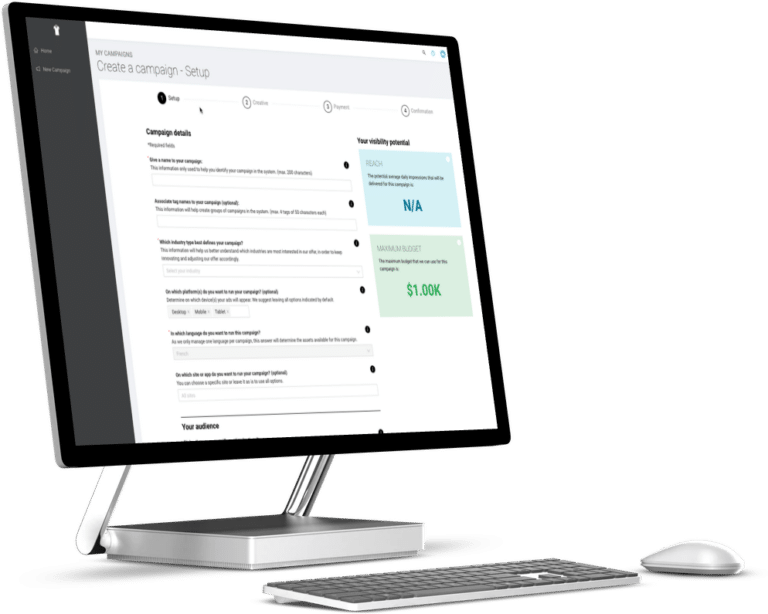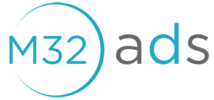
Create your online advertising campaigns: key things to know before you start
Home | The Market Buzz | Create your online advertising campaigns: key things to know before you start

As business owners and operators, we want potential customers to know about our company. That’s natural! Ad campaigns help spread the word, however, advertising might not be your area of expertise and if this is all new to you, it’s important to first understand the basics.
We’ve prepared some videos and an article for you that present the keys to a successful digital campaign.
Before starting, know that you can watch more in-depth videos on the same topic at any time, free of charge:
The steps to creating a digital ad
There are several steps you should understand before creating your ad.
Definition
Digital advertising is any type of marketing done on different digital media: social media, a website, a newsletter, a mobile application, etc.
What leads consumers to buy
The traditional buying process is linear and was formalized in 1898. But don’t worry, it still works today, especially in digital format! It’s called the AIDA method: Attention, Interest, Desire and Action.
The 9 dimensions of paid marketing
Campaign objectives and success metrics
When defining your campaign, consider setting a single goal. Here are 3 types of goals you could strive for:
- awareness (simplicity)
- engagement (persuasion)
- direct response (sales, subscriptions, etc.)
When it comes to metrics, all interactive platforms are measurable in real time. Don’t forget KPIs (key performance indicators), as they will help you validate whether you’re reaching your objectives and if you need to adjust the advertisement based on the results.
Also, be sure to regularly check your campaign, email, website and other data reports.
Pricing models and ad formats
Welcome to the confusing world of digital ad pricing models! Don’t worry, we’ll briefly explain what you need to know.
There are a few different ways you can pay to display your advertisement:
- a flat fee (fixed price for a given format and timeframe)
- CPI (cost per impression) and CPM (cost per 1,000 impressions)
- CPA (cost per action), CPC (cost per click) or CPV (cost per view)
If you’re unsure about a term, we invite you to read our article on words commonly used in digital marketing.
As for the ad format, you can choose:
- an integrated display (banner)
- an interactive display (expandable banner)
- a video
- a roadblock (display on all available spaces on one page)
- text (classifieds, directories)
- a native format (advertorial, social media posts)
- and a few others
It’s up to you to choose what suits you best or rather, what suits your potential customers best!
Environment, platform and targeting
The advertising format is closely tied to the environment, platforms and your target, so it’s important to take note of it.
The environment is where your ad will appear: website, search engine, social media, etc.
The platform is the tool the visitor uses to browse the Web. For example: computer, smartphone, game console, etc.
When selecting and defining these aspects, always consider the consumer’s state of mind. Are they in a hurry? Why are they doing this search? Are they an active or passive user? It’s these kinds of questions that will help you create an ad that users will want to click on.
As for targeting, you can define basic targets and ones that are more advanced—and therefore more precise. To learn more about this, we invite you to watch our digital advertising videos.
Creative/Message and landing page
Now for the final touch: the creative (or message) and the landing page!
Here are some rules to follow to create your message:
- compelling: photo, text, logo and call to action
- concise: different visible sections, selling points
- clear: display the logo, keep the same layout across all dimensions
By respecting these elements, you’ll ensure your ad’s success, but you’re not done yet! There’s one more important thing: the landing page.
A landing page is the continuation of your advertisement. It delivers on what the ad promised and its objective is to make the visitor take action.
This very important page must therefore:
- be free of distractions (no menu, no pop-ups, no nothing)
- have a clear, eye-catching call to action
- be adaptive to mobile
- have a striking visual
- use words that grab consumers (emotion, language, desired situation) without misleading them
- have a very simple form to fill out or a simplified purchase button to click (no one likes when things are complicated!)
- have different versions depending on the tool the visitor is using: mobile, computer, tablet, etc.
Once you’ve taken all this into account, you’ll have everything you need for an ad that will net results!
Beyond the 9 dimensions
An advertisement that aligns the 9 dimensions puts all the odds of optimal success in your favour. But obviously, no one can predict how many qualified leads will see your ad!
Beyond these dimensions, there is also the date(s) on which you launch your campaign, the budget, the targeted geographical area, a brief profile of your target consumer and their behaviour, and “buy local” policies to take into consideration.
Diving deeper into digital advertising
You’ll find more in-depth explanations and details in our free video courses here:
Share:

Lisa Camacho
Based in our Toronto location, Lisa started her career in print media and branched out into sales and client relations for two of the world’s leading brands in the automotive and travel industry. Within the M32 team, she’s leading the publishers and agencies relationships in Canada and the USA. Connect with Lisa if you’d like to learn more about M32!




